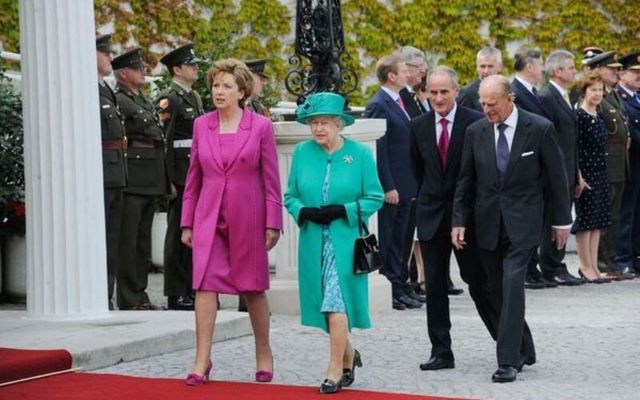The British Government first suggested Queen Elizabeth II's Royal visit to Ireland more than 10 years before the historic visit took place in 2011, newly released State Papers have revealed.
Newly declassified documents show that then-British Ambassador to Ireland Dame Veronica Sutherland first suggested the visit in July 1998, shortly after the signing of the Good Friday Agreement in April of the same year.
Then-Taoiseach Bertie Ahern later informed British Prime Minister Tony Blair that such a visit could not take place before the next Irish general election in 2002.
Irish Ambassador to the UK Daithí Ó Ceallaigh was asked about a possible visit in 2001 and responded that the Irish Government wanted to wait until issues in Northern Ireland had settled down.
"We would wish to ensure that the Queen gets the best possible welcome and that we thought it would be best if the institutions in the North were bedded down and a bit more stable than at present to ensure that welcome," Ó Ceallaigh said.
Queen Elizabeth II's Royal visit to Ireland eventually took place in May 2011, 100 years since the last visit by a British monarch to Ireland when her grandfather King George V visited Dublin in July 1911 as part of his ascension tour.
Coming at a time of peace in Northern Ireland, the Queen's visit was seen as a symbolic normalization of the relations between Britain and Ireland.
Queen Elizabeth was welcomed by then-Irish President Mary McAleese, who said the visit came at "the right moment". Then-British Prime Minister David Cameron described the visit as a "huge step forward" in the relations between Britain and Ireland.
In April 2014, President of Ireland Michael D. Higgins reciprocated the Queen's visit, becoming the first sitting Irish President to make a state visit to the UK.




Comments